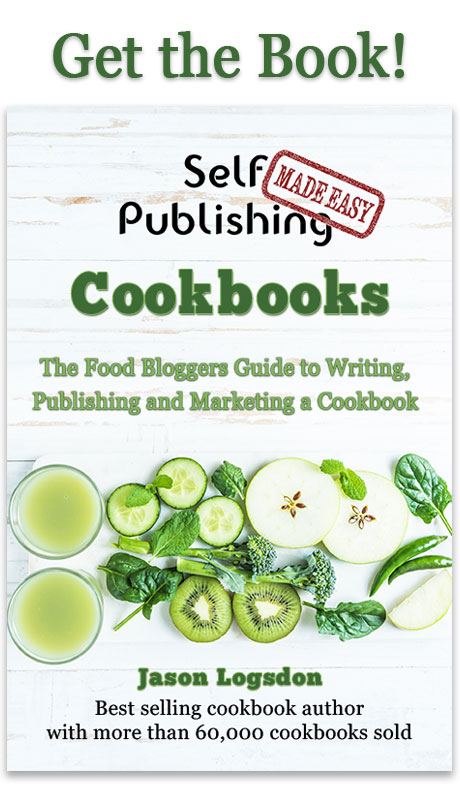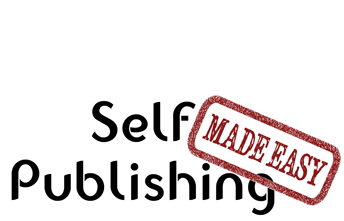Existing Users Sign In

Publishing Master Course Outline
- Self Publishing Master Course Introduction
- Before You Get Started
- Overview of the Publishing Process
- Determining Your Cookbook Goals
- Determine Type of Cookbook
- Consider a Sample Book
- Determine Book Subject
- What Makes a Good Cookbook Subject
- Brainstorming Cookbook Subjects
- Determine the Competition In a Cookbook Subject
- Finding Complementary and Competitive Products
- How to Generate a List of Keyword for Your Cookbook Subject
- Competitive Breakdown of an Amazon Sales Category
- Finally Choosing Your Cookbook Subject
- Research Cookbook Subject
- Choosing Your Avatars
- Researching the Cookbook Subject
- Researching Material for Your Cookbook
- Outlining and Notetaking Tools
- Write Cookbook and Recipes
- Keys to a Well Written Book
- Components to a Recipe
- Recipe Layouts
- Recipe Attribution
- Book Writing Tools
- How to Back Up Your Cookbook Files
- Photograph and Test Recipes
- How to Test Cookbook Recipes
- Food Photography Tips
- Proofread and Edit Cookbook
- Types of Cookbook Editing
- Tips for Self Editing Your Cookbook
- Finding Outside Editing Help
- Proofreading and Editing Resources
- Publishing Formats
- Types of Cookbook Publishing Formats
- Choosing a Self Publishing Printer
- Comparison of Print on Demand Cookbook Printers
- CreateSpace Cookbook Publishing Review
- IngramSpark Cookbook Publishing Review
- Ebook Publishers and Distributors
- Design Cookbook
- Cookbook Design and Formatting Guidelines
- Choosing A Great Cookbook Title
- How to Design a Cookbook Cover
- What Fonts to Use in Your Cookbook
- Cookbook Front Matter
- Cookbook Back Matter
- In-Book Marketing
- How to Design an eBook
- How to Create an ePub File
- Previewing and Testing eBooks
- Finding Outside Design Help
- Publish Cookbook
- How to Price Your Cookbook
- How to Write a Selling Book Description
- Determining Your Amazon Categories
- Choosing Publishing Keywords
- How to Publish on Amazon With CreateSpace
- How to Publish an eBook
- How to Publish On the Kindle
- How to Publish on the Nook
- How to Publish on iTunes
- How to Publish Your Book Through Smashwords
- How to Create and Sell a PDF on Your Blog
- Wholesaling Cookbook
- Methods of Cookbook Wholesaling
- Where to Wholesale Your Cookbook
- Developing a Wholesaling Line Sheet
- Promote Cookbook
- How to Launch Your Cookbook Successfully
- Getting Amazon Reviews
- Newsletter Promotions
- Free Content and Previews on Your Blog
- How to Get Blogs to Write About Your Cookbook
- General Articles
- All About ISBN Numbers
- How Do Cookbook Royalties Work?
- Financing Your Self Published Cookbook
- What is the Amazon Sales Rank?
- Cookbook Writing Resources
- Understanding Book Margins
- PDF Self Publishing FAQs
- How to Poll Your Blog Readers
- What is DRM
- Great Books to Learn About Food and Recipe Writing
- KDP Select - What Is It and Is It Worth it?
- Cookbook Design Programs
- Amazon Top Cookbook Reviewers
- Should You Publish Your ebook Directly or Use a Distributor
- Case Studies
- Sales Channel Revenue Breakdown with Modernist Cooking Made Easy
- Cookbook Writing and Marketing Templates
- Recipe Testing Worksheet Templates
- Review Requests Templates
- Cookbook Newsletter Promotion Templates
- Cookbook Manuscript Templates
Existing users please sign in to continue reading this article.
Welcome to Self Publishing Made Easy!
Publishing a Cookbook can be
Challenging
We will make the process clear and easy, allowing you to focus on creating a remarkable cookbook without any distractions.
Easily Navigate The Publishing Process
Benefit From a Community of Other Self Publishers
Maximize Your Distribution and Profit
We are the leading cookbook self publishing member site on the internet and are here to help you navigate the sometimes tricky path of self publishing. We provide step by step guidance to publishing your own cookbook as well as access to our active and helpful community of self publishers.
Or Get More Information about Self Publishing Made Easy
How to Price Your Cookbook
Click here to get great self publishing content via emailLearning how to price your cookbook is as much an art as a science. It is a very important decision that can lead to a lot of stress. There's always the trade off between setting the price too high and losing sales and setting it too low and leaving money on the table. There's no hard and fast rules to a successfully priced cookbook but there are several considerations you need to take into account.
Tracking the effects of book pricing on sales, especially on Amazon, is very hard and convoluted. There are people that try to figure out ideal Amazon pricing for a living and I just don't have the time or inclination to compete with them. I'd rather spend my time cooking and writing books. If the information below feels overwhelming, don't worry, it's that way for everyone. I've found pricing my Monetizing books around the average price for a book in my genre works good enough for me.
Your Cookbook Goals
The pricing you pick will have a lot to do with the goals of your cookbook. Viral cookbooks will normally be priced lower than Monetizing or Marketing cookbooks to maximize their sales. Monetizing cookbooks will try to maximize the total revenue generated, or sales x royalties. Marketing cookbooks don't always fall one direction or another, it's highly dependent on the cost incurred in developing them.
Your Cookbook Format
There are very different pricing models for ebooks vs print books.
Print Books
The list price for print cookbooks typically runs anywhere from $15 to $30 for popular cookbooks and $25 to $50 for gourmet or restaurant cookbooks. Amazon usually discounts these by 30% to 50%. It is usually ideal for most Monetizing or Marketing books to fall somewhere in this range. Amazon may discount your books as well, though it's normally more like 10% to 20%. Remember, if Amazon discounts your book you still get paid a royalty on the list price, not the discounted price.
Kindle Books
Kindle books normally range from $0.99 to $14.99 and are usually not discounted. One quirk of Kindle royalties is that you only get a 70% royalty if the book is priced between $2.99 and $9.99. Otherwise your royalty is 35%.
So while you might be tempted to sell your Kindle book at $15.99 instead of $9.99, you would only make $5.6 per book sold at $15.99 instead of $7 per book selling at $9.99. So you would have to sell more books at the higher price to come out ahead.
The same is true at the bottom of the scale. Every book sold at $0.99 will earn you $0.35, but a book sold at $2.99 will earn you $2.10. It might be tempting to price your book at a dollar and try to sell more copies but you will have to sell 6 times as much to break even. For some books, especially Viral ones, this might be a trade off worth making.
Authors with Viral cookbooks in the Kindle format can also look at giving their books away for free. While it doesn't bring in any more money it arguably can lead to wider distribution.
General Perception
It can be tempting to try and price your cookbook as low as you can while still making a decent profit. This is especially true for people who view their own work as less valuable than the work of "professionals". However, it is important to remember that lower-priced things tend to be viewed as less valuable and less well done.
If you were looking for somewhere to eat and a random restaurant had a full filet mignon dinner for only $5 would you eat there? Or would you be worried that there would have to be something wrong because otherwise they'd never charge that little for high quality steak? You want to avoid that situation with your book.
If all your competitors are priced at $40 and your book is only $10 then potential readers might start to worry that something is wrong with your book and that's why you are selling it so cheaply.
On the flip side, pricing your book higher, assuming it is a high quality book, will make people perceive it as being of higher quality than your competition. This can also be important if you are publishing a Marketing book. Sales might not matter as much as the perception of your name with high-quality books.
You can also price it in the middle, removing price as a factor in the reader's purchasing decision. For many Monetizing books this is a sound strategy.
Remember that a higher price doesn't always lead to less sales. Recently I raised the price of my Whipping Siphon book by $4, from $14.95 to $18.95 and sales actually increased.
Book Printing Costs
Another large factor to consider when pricing your book is how much each book sold costs you. For print books sold through Amazon you are charged for the printing, handling, selling, and any wholesale discount if it's not through CreateSpace. A book sold on Amazon and printed through CreateSpace takes about 40% off the top, then about $1 per 100 pages in the book, plus an extra $1.
A 200 page book sold for $10 will earn you only $2.75. The same book sold for $20 earns you $8.75, over triple the royalty. With the lower price you have to sell over 3 times as many copies to come out ahead. You can find out more information about CreateSpace pricing here and their royalty calculator.
If you publish through CreateSpace there are also minimum amounts you need to charge based on the size of your book. If you are trying to produce a very inexpensive book this may affect you.
For non-CreateSpace books you have to pay a printing cost and a "wholesalers discount". This discount is usually 30% to 55%.
For Kindle books there are delivery costs. These are about $0.15/MB of book size.
More Sales Lead to a Higher Amazon Sales Rank
Another wrinkle in the pricing decision is the Amazon Sales Rank. Higher sales lead to a higher sales rank which leads to more promotion in different Amazon categories. This higher placement potentially leads to more sales. This can be especially effective during your cookbook launch where the lower price can vault you up the ranks, keeping it relevant for a longer time.


